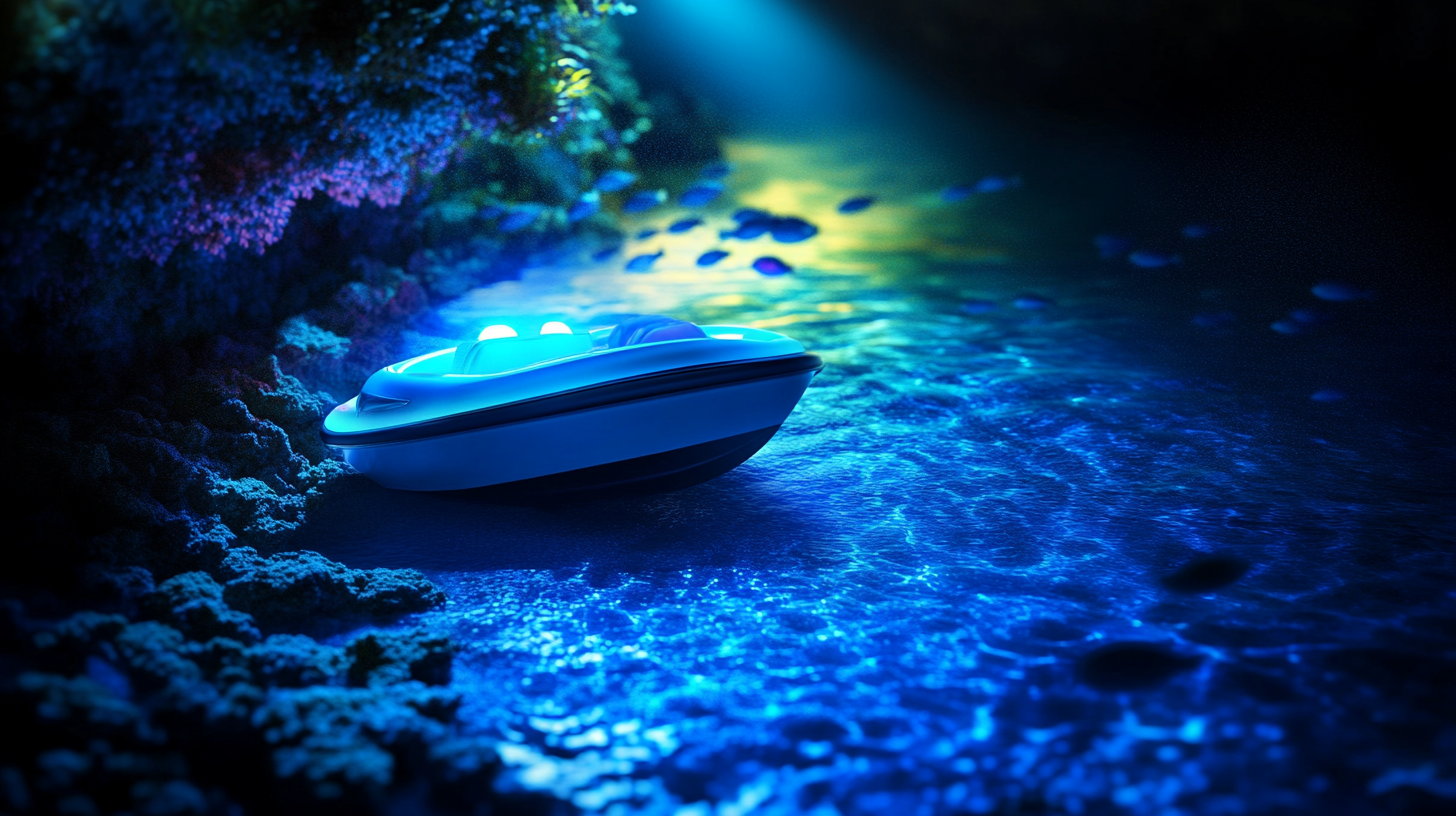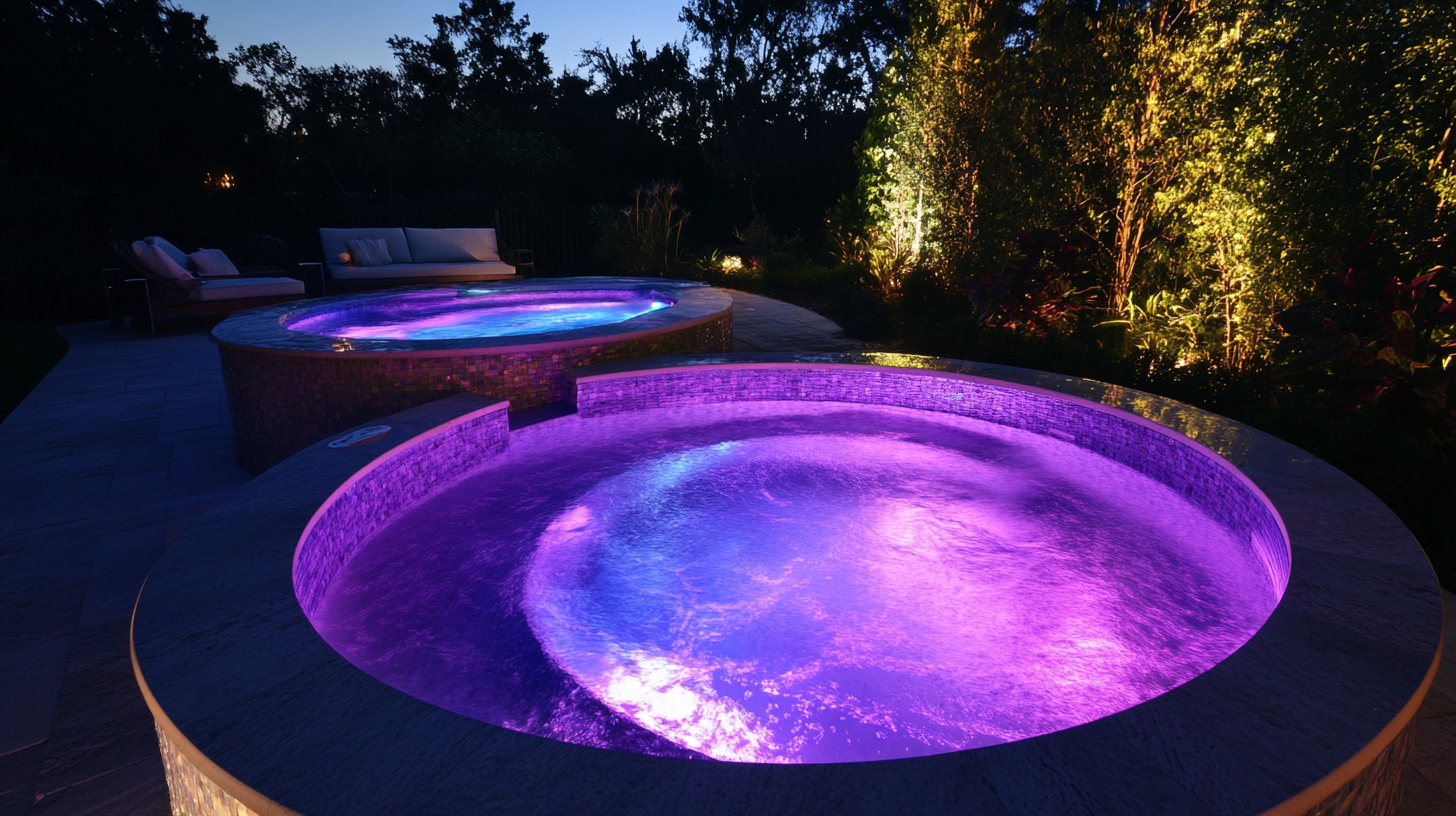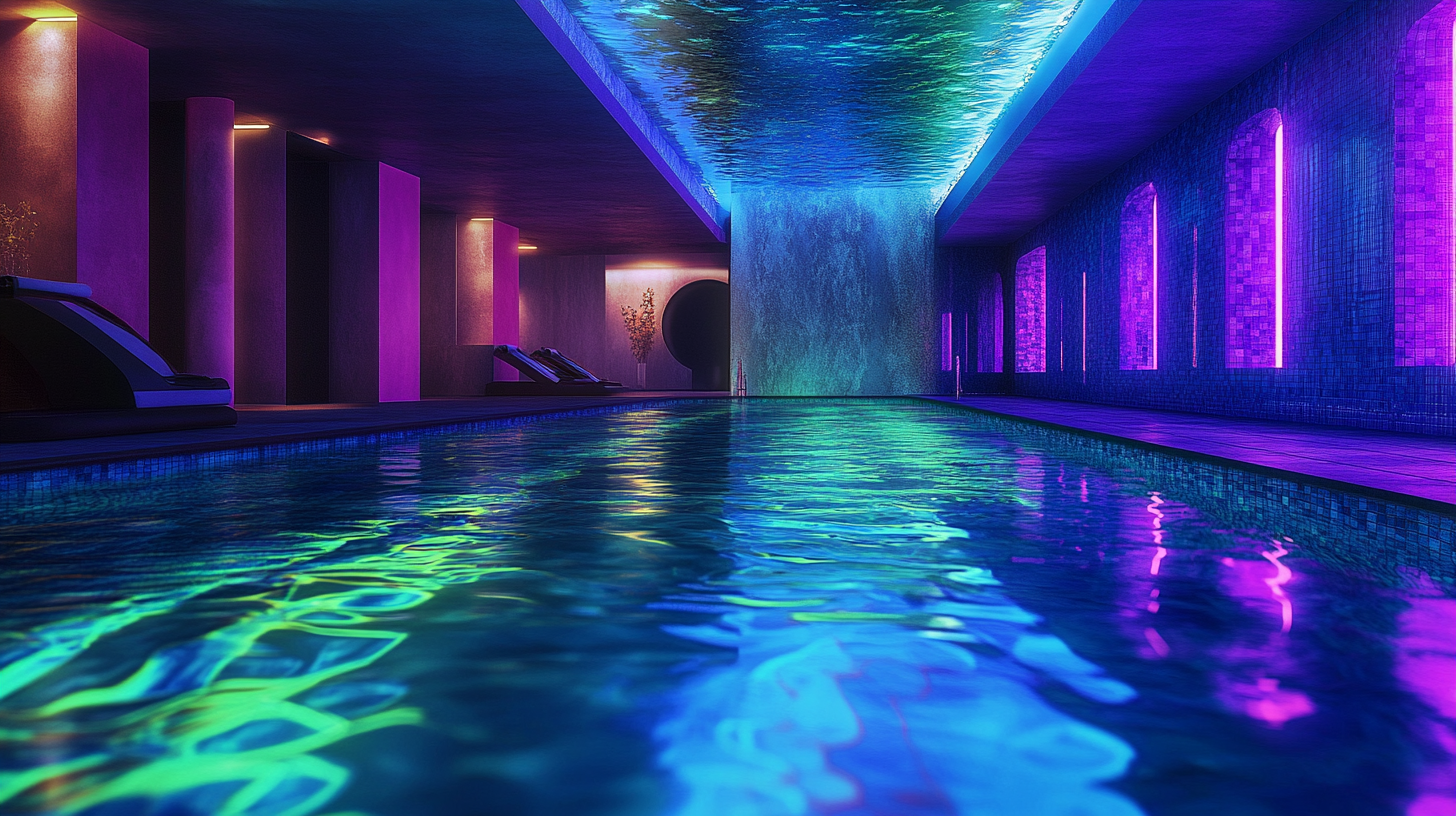Understanding the different types of underwater boat lights
When it comes to illuminating the depths beneath your vessel, understanding the different types of underwater boat lights is essential for enhancing your maritime adventures. These lights not only add a vivid flair to your boating experience but also serve practical purposes, such as attracting fish or providing necessary visibility for nighttime activities. Let’s dive into the captivating world of underwater lighting and explore the diverse options available.
One of the popular types of lights you’ll encounter is the LED underwater light. Known for their energy efficiency and long lifespan, LED lighting solutions are a favorite among boat owners. They produce minimal heat, making them safe to use underwater while still offering a vibrant array of colors to choose from, transforming your vessel into an aquatic light show.
Another fascinating option is the high-intensity discharge (HID) light. These lights are celebrated for their exceptional brightness, capable of illuminating deeper and murkier waters compared to other types. While they might consume more power than their LED counterparts, HID boat lights are ideal for serious night-time fishing enthusiasts needing that extra reach.
For those seeking a more traditional approach, halogen lights offer a warm and inviting glow. Although not as energy-efficient as LEDs or as bright as HIDs, halogen lights provide a cost-effective solution. Boat owners looking to add a quaint and cozy aesthetic to their underwater lighting setup often lean towards this classic option.
Lastly, fiber optic lights bring a touch of elegance and versatility, utilizing bundles of fiber optic cables to create captivating displays. Despite being slightly more intricate in design, they allow for unique installations where the light source can be concealed away from moisture exposure. This makes them a delightful choice for unique, customizable lighting effects aboard your boat.
With such a variety at your disposal, every boater can find the perfect underwater lighting solution to suit their needs, style, and circumstances. Whether you’re seeking performance, cost-effectiveness, or visual impact, this guide will help you navigate the ocean of options and bright possibilities.
key features to consider
When selecting boat lights for underwater use, there are several key features that can make a world of difference in both performance and satisfaction. One of the most critical aspects to consider is the brightness of the lights. Measured in lumens, brightness determines how well the lights will illuminate the surrounding water. For those looking to spotlight shoals of fish while night fishing or who simply wish to create a stunning visual effect, choosing lights with higher lumens is a smart move. However, ensure you’re not overdoing it to avoid dazzling marine life or fellow boaters.
Equally important is the color of the light. Most types of lights, especially LEDs, offer a spectrum of colors to suit different moods or purposes. White and blue are popular choices for a classic maritime look, while green lights are renowned for attracting fish and enhancing visibility in murky waters. Consider experimenting with color-changing options for dynamic, mood-enhancing visual experiences on your nautical adventures.
The durability of underwater lighting is another fundamental characteristic to assess. Remember, these lights are constantly exposed to harsh underwater environments that include corrosion and extreme pressure. Opt for lights with excellent waterproof ratings and robust housings made of corrosion-resistant materials like bronze or marine-grade stainless steel to prolong their life while ensuring optimal performance.
Additionally, consider the power consumption of the lights. With LED boat lights typically being more energy-efficient, your choice will impact your vessel’s battery life. Low-power options ensure prolonged usability without the worry of draining your power supply during extended trips. It’s wise to balance your requirements for brightness and design with sensible energy use to enjoy consistent and reliable lighting.
Lastly, don’t overlook the ease of installation. Depending on the design and the available space on your boat, some lighting solutions may require professional installation due to their complexity. However, there are plug-and-play options that cater to the DIY enthusiast, allowing for a straightforward setup process. Ensure you have the necessary supplies and guidance before starting any installation project.
Your ultimate choice of underwater boat lights should reflect your specific needs, the type of activities you engage in, and your aesthetic preferences. With this guide to key features in mind, you’re well-equipped to navigate the sprawling sea of underwater lighting options, ultimately finding the perfect fittings to light up your maritime horizon.
installation and safety tips
Getting your underwater boat lights properly installed is a project that can significantly enhance your boating experience, but the task requires careful consideration to ensure both effective functionality and safety. Successfully installing your underwater lighting setup starts with selecting the right types of lights based on your vessel’s design and personal preferences. Keep in mind that the right positioning is crucial; many boaters prefer installing lights around the transom area to achieve a broader beam spread that beautifully illuminates the surrounding water.
Start by planning the layout and determine exactly where you want your boat lights to be installed. Take into account the depth, beam angle, and desired effects—whether you want a subtle glow or a dazzling spectacle. Once your plan is in place, ensure all electrical connections remain above the waterline; even if a light is submerged, it’s vital to keep wiring dry to prevent shorts or corrosion. Look for lights with waterproof connectors and cabling designed specifically for underwater use to bolster safety and longevity.
Every installation guide will stress the significance of drilling your mounts with pinpoint precision. Using a template can aid in positioning screws accurately while preventing unnecessary holes in your vessel. Drilling should always be approached with methodical care—prioritize using seals or gaskets to prevent water ingress, and employ silicone or marine sealant liberally around each drilled hole for an added layer of protection.
Safety should also be a priority—not just for preserving your boat’s integrity, but also for ensuring a benign impact on marine life. Choose environmentally friendly lights that don’t emit excess heat or disrupt local wildlife. Mindful selection of color and brightness settings can further prevent unintentionally dazzling fish or other sea creatures.
Consider hiring a professional if any part of the process seems daunting or if you want to be doubly sure every element is fitted safely and correctly. An expert’s input offers peace of mind, ensuring your underwater lighting is installed to withstand the rigors of the sea while fulfilling your aesthetic expectations. Whether you take a professional route or a DIY approach, a well-installed system will not only enhance your nighttime adventures but also guarantee that your aquatic forays are both bright and secure.
maintenance and care
To keep your underwater lighting in optimal condition, regular maintenance is essential. Proper care not only extends the lifespan of your boat lights but also ensures they continue to perform effectively, enhancing both safety and aesthetics during your maritime adventures. Here, we present a guide to maintaining and caring for the various types of lights used in marine environments.
A crucial aspect of maintaining underwater lights involves routine inspection. Frequently check for signs of wear, corrosion, or any damage to the light fixtures and associated wiring. Corrosion is particularly problematic in saltwater environments, so it’s prudent to use marine-grade or stainless steel materials to minimize deterioration. Identifying issues early prevents further damage and ensures timely repairs.
Cleaning your boat lights is another vital part of maintenance. Regularly remove any buildup of barnacles, algae, or mineral deposits on the light fixtures. These can not only dim the brightness, affecting the lighting’s effectiveness but also lead to overheating issues. Use a soft brush and a mild detergent solution or a specialized marine cleaner to gently scrub the lights. Avoid abrasive materials that could scratch or harm the lens.
Pay special attention to the lens and seals. Clear lenses ensure optimal brightness and focus of the light, while intact seals prevent water ingress which could lead to electrical failures. Inspect seals for cracks or deterioration and replace them as necessary. A clear and clean lens also enhances the light’s ability to penetrate water, making night-time navigation safer and more enjoyable.
The electrical components of underwater lighting systems require diligent care. Periodically check the power source and connection points for signs of corrosion or wear. Ensure battery terminals are clean and free from corrosion by regularly applying dielectric grease. If your system uses fuses, ensure they are intact and not showing signs of wear or corrosion. Voltage fluctuations can damage the lights, so a regular check with a multimeter can help monitor the system’s health.
For LED lights—popular for their efficiency and longevity—ensure that their cooling systems are functional. Overheating, even in cooler underwater environments, can significantly reduce their lifespan. Confirm that heat dissipation mechanisms like heatsinks are clean and not obstructed.
It’s wise to conduct a thorough maintenance routine at least once a season, with more frequent checks if you use your boat regularly. Adopting a preventive approach not only safeguards your investment but also confirms that your lighting system reliably illuminates your vessel’s path.
Should you encounter any complex issues during your maintenance routine, consider consulting the manufacturer’s guide for troubleshooting tips or enlisting professional help. Expert advice can provide clarity and solutions for any persistent problems, guaranteeing that your underwater lights remain bright and dependable.
Overall, diligent maintenance and care are integral to preserving the functionality and aesthetics of your underwater lighting system. By following these guidelines, you can ensure that your boat’s lighting will continue to shine vividly, offering both practical benefits and an enhanced aquatic ambiance during every maritime journey.
benefits and uses of underwater lighting
Underwater lighting offers a multitude of advantages for boat enthusiasts, from enhancing safety and adding a touch of style to creating new opportunities for adventure. With the right types of lights properly installed, your boat can transform into a mesmerizing vessel of light, providing an unforgettable experience for everyone on board.
One of the primary benefits of underwater lighting is improved visibility during night-time excursions. These lights provide crucial illumination in dark waters, allowing for safer navigation and easier spotting of obstacles such as rocks, buoys, or other vessels. This added visibility is especially beneficial when docking or navigating through crowded marinas after sunset, ensuring a smooth and stress-free boating experience.
Beyond practical functionality, underwater boat lights serve an aesthetic purpose, infusing your boat with vibrant, captivating colors. A well-lit boat stands out magnificently against the dark waters, creating a stunning visual display that can be both enchanting and memorable. For those who love hosting gatherings on their vessel, colorful lights can set the mood, enhancing the overall ambiance and leaving an indelible impression on guests.
Fishing enthusiasts will also find underwater lighting invaluable. Certain colors, such as green or blue, have been shown to attract fish by mimicking the natural light they are drawn to. This can significantly improve the chances of a successful catch, as schools of fish swarm towards the illuminated area. With this strategic use of light, nighttime fishing trips become not only more exciting but also more fruitful.
For marine biology hobbyists or wildlife observers, underwater lights offer the opportunity to observe sea life up close in their natural habitat. The beams create a unique window into the underwater world, revealing the movements of marine creatures that normally remain hidden in the darkness. This can transform an evening adventure into a fascinating exploration of the marine ecosystem, providing endless entertainment for curious minds.
Furthermore, underwater lighting can enhance the security of your boat. A well-lit vessel is less likely to attract the attention of would-be intruders or vandals deterred by the visibility, offering peace of mind while your boat is moored or docked overnight. This guide emphasizes that strategically placing lights around entry points also increases safety and provides coverage where you need it most.
In the modern era where technology seamlessly integrates into our leisure activities, the allure of customizing your boating experience with underwater lighting is more appealing than ever. Whether used for fishing, enhancing aesthetics, or simply ensuring safe navigation, the versatile uses and undeniable benefits of underwater lights make them a popular and rewarding addition to any vessel.


